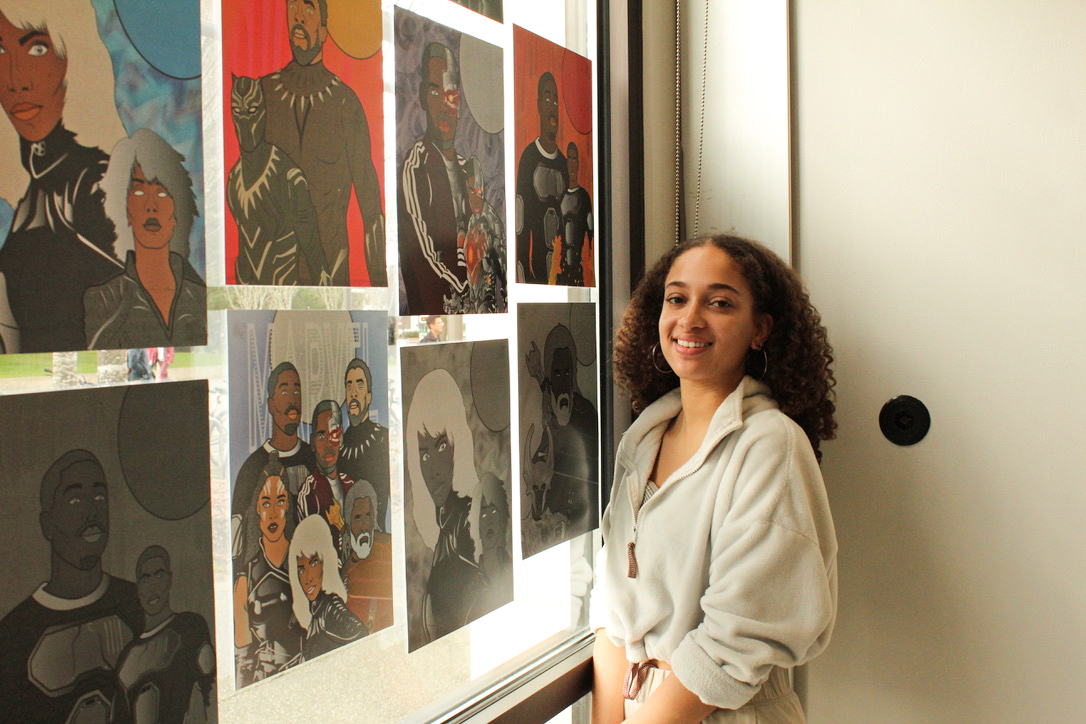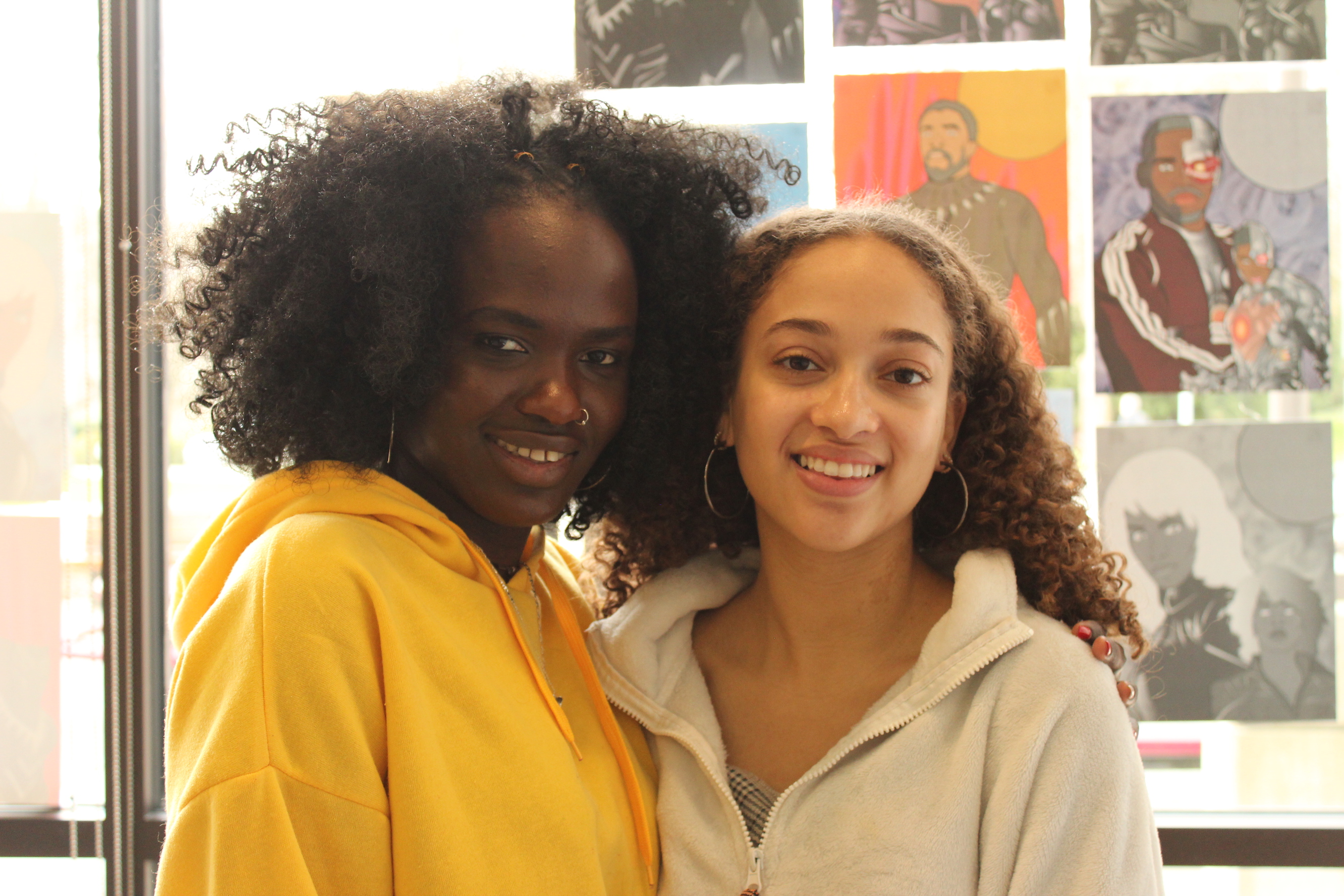Exhibition featured a variety of artistic media with the goal of bringing people together
You could hear the art show before you could see it. Music bumped from the Michele Pujol room in the Student Union Building, beckoning viewers out of their post-reading break funk and towards the African and Caribbean Students’ Association’s (ACSA) Black History Month art show. The room was alive with enthusiasm as artists and their friends mingled, voices and laughter rising above the beat.
“To celebrate Black History Month, we wanted to celebrate the local artists we attend meetings and events with,” said Zin Mtshontshi-Dewa, one of the organizers of the art show. “Many ACSA [members] express [themselves] through various artistic mediums, so why not celebrate them during February? It was important to me to highlight artists from across the diaspora of Afro-descendant people. We’re so complex in the most beautiful way.”
The art displayed was done in a variety of media: paint, digital art, and photography were all represented. For the artists, the ability to express themselves and their communities through art was the most important aspect of the event.
As well as being an organizer, Mtshontshi-Dewa was also one of the featured artists. She says that her art reminds her of her roots and allows her to honour those who came before her.
“As a Black womxn, there is no shortage of outside voices telling you who you should be and how you should define yourself,” said Mtshontshi-Dewa. “Art gives me the chance to claim the power that is rightfully mine and tell people my story, in my own words — well, in Maya Angelou’s words, but you get me.”
“Growing up in an African household, I was always taught to suppress my anger, and never let my emotions give the other person [a reason] to find fault in me,” said Clancy Ngolah, another one of the artists.

“As a very opinionated person, I found this difficult to understand, until I realized how drawn people were to my artistic ability. I saw this as an opportunity to get my voice out, to share my thoughts and feelings to the rest of the world in a way that wouldn’t leave me vulnerable and would get people to listen.”
Ngolah intends to use art for politics, commenting on social issues that affect both the Black community and all of society.
Divine-Mercy Ezeaku finds inspiration from her experience of life in Victoria.
“Most of the work I’ve done is based on Black people loving themselves in their skin … Black people loving their hair,” she said. “Legends fought for us and helped us see ourselves in a brighter light … healing from past wounds and helping [ourselves] — and [our] community — know [our] value each and every day.”
Some of the artists are already turning art into work. Denver Wilson-Rymer has been taking photos for about two years, but only started getting serious about photography when he bought a camera for cheap with the intention to sell it.
“I had my friend — rich Saudi friend, didn’t know how money works — he was selling a $600 camera for $200,” said Wilson-Rymer. “I was like ‘sure, I’ll buy it,’ planning to flip it.”

He never sold the camera, and is now exploring film and other elements of photography.
Using Adobe Illustrator, Samme Wood-Gaines digitally creates portraits, many of Black celebrities and cultural icons.
“I’m so drawn to faces,” she said. “I do envy certain artists [who can] do cool backdrops [but] I gravitate to faces a lot more.”
As a graphic designer, Wood-Gaines creates logos and business cards, as well as her illustrations.
For Mtshontshi-Dewa, the art show achieved the mission of ACSA: to bring people together.
“There were many doubts that this event would be successful, as we have never done an art show before,” she said. “But after seeing that room full of people enjoying themselves, surrounded by art, I was assured it was all worth it.”
The above artists can be contacted for queries about their work on Instagram or by email.










